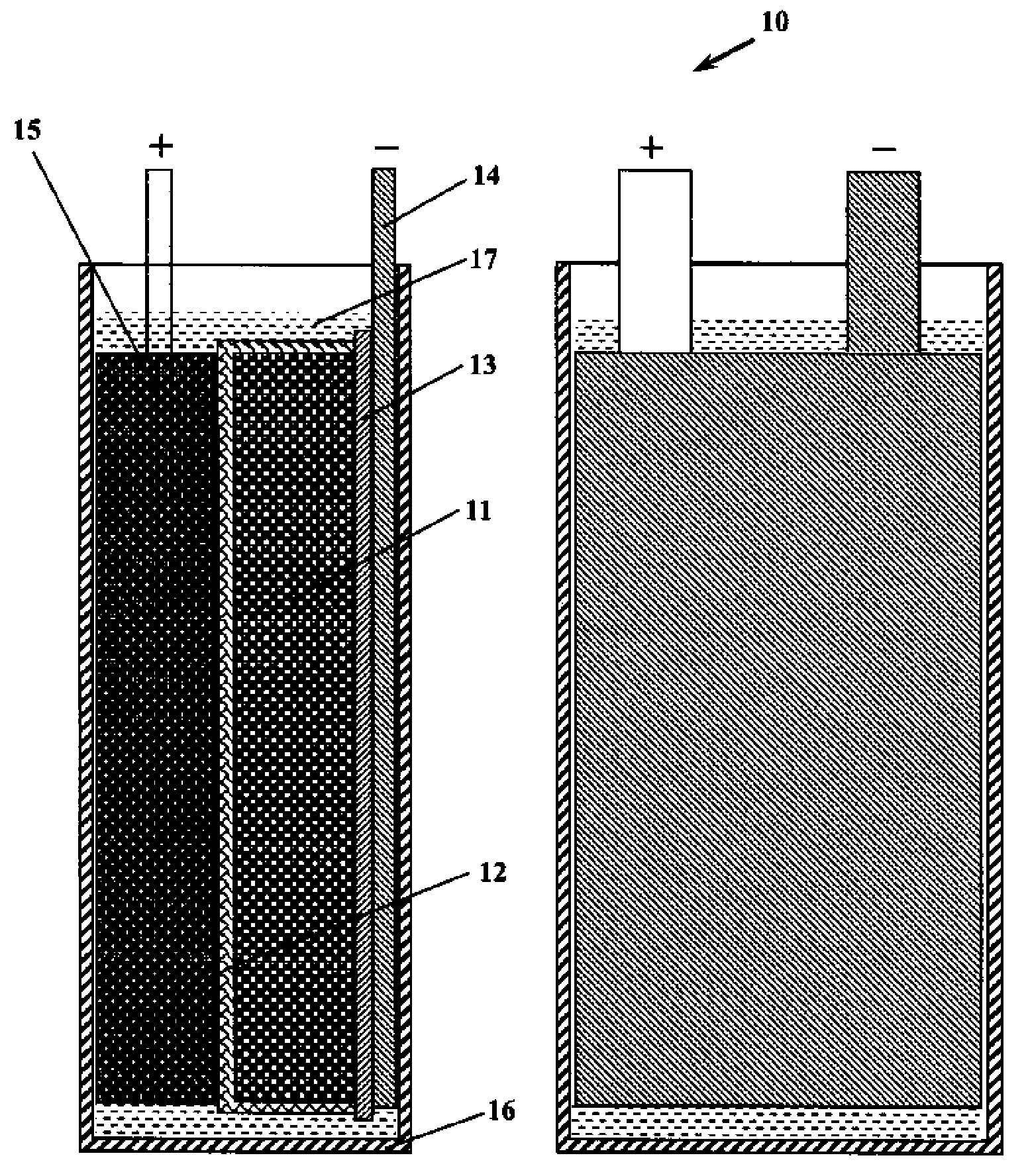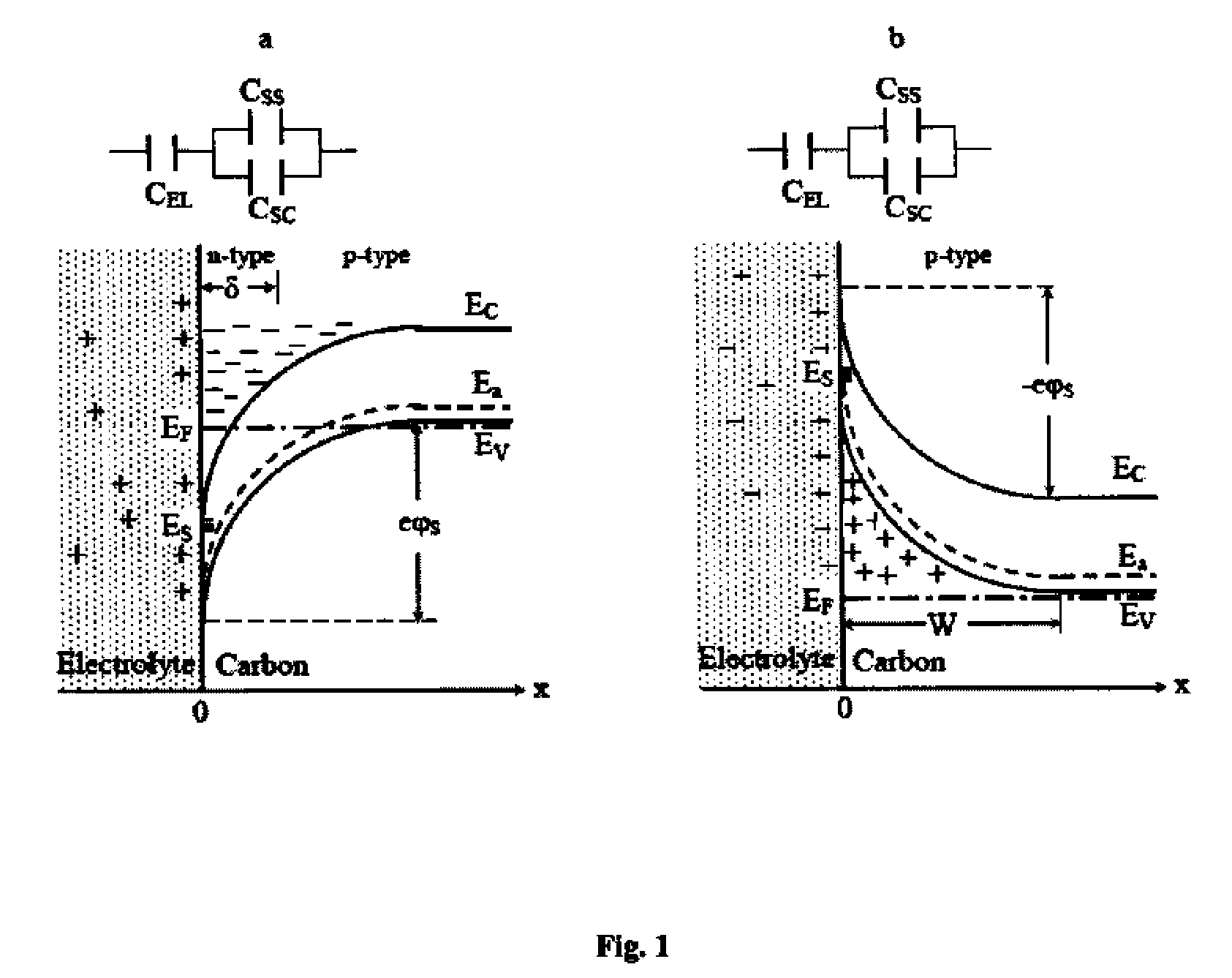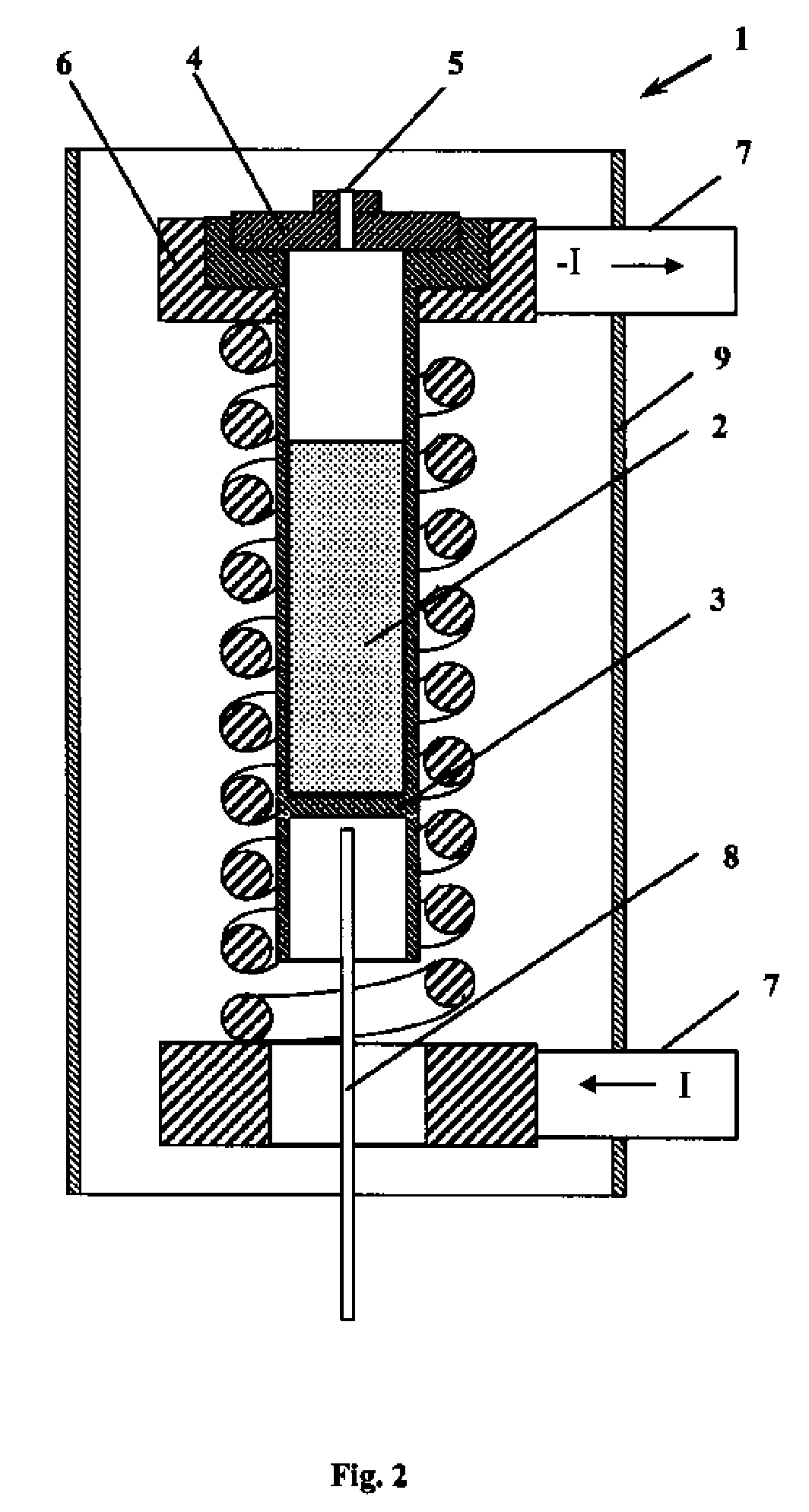Electrode for use with double electric layer electrochemical capacitors having high specific parameters
a technology of electrochemical capacitors and electrodes, applied in the direction of non-metal conductors, cell components, conductors, etc., can solve the problems of increasing the concentration of uncontrolled impurities in carbon materials, increasing the energy, capacity and operational parameters of the best examples of modern electrochemical capacitors based on carbon materials, etc., to achieve advanced parameters, improve the effect of specific energy and power parameters
- Summary
- Abstract
- Description
- Claims
- Application Information
AI Technical Summary
Benefits of technology
Problems solved by technology
Method used
Image
Examples
example 1
[0050]In order to dope a carbon powder by boron, the initial powder was wetted with aqueous solution of boric acid (H3BO3). The calculated value of boron content in the powder was about 1%. Following the wetting, the carbon powder was subjected to vacuum drying at the temperature of 110° C. during 5 hours. Thereafter, the power's thermal doping was performed in the chamber 1 according to the afore-mentioned technology. During doping, the chamber's temperature increased from room temperature to 1,100° C., the heating rate was about 10° C. / min. Thereafter, the powder was held at this temperature during 30 minutes, and further the chamber's temperature slowly decreased to the room temperature value.
[0051]Following doping of the carbon powder, measurements were taken to identify specific area of the developed surface, conductivity type, holes concentration and dependence of the specific electric resistance (ρ) of the powder doped by boron, on the external pressure (P). The results of th...
example 2
[0069]For the doping of the carbon powder by nitrogen, the powder was wetted by nitric acid (HNO3) with the calculated value of the nitrogen content in the powder, which evolves during decomposition of the nitric acid, of 0.5%. After the wetting, the powder was thermally doped in the chamber 1 as per the afore-mentioned technology. During the powder's doping, the temperature in the chamber increased to 900° C. and the powder was held at this temperature during 30 minutes.
[0070]After the doping of the carbon powder by nitrogen, measurements were taken to identify the specific area of the developed surface, type of conductivity, concentration of holes and dependence of ρ on P of the powder. The results of the measurements show that the doping by nitrogen with low concentration does not bring about any change of the type of the powder's conductivity, however, it reduces the concentration of holes from about 2·1019 cm−3 to about 9.5·1018 cm−3. Besides, S value of the powder grows insign...
example 3
[0079]In this example the carbon plate was irradiated by fast electrons to increase the concentration of holes and conductivity of the electrode with DEL. The carbon plate, based on activated carbon powders and polymer binding material had a shape of the disk having 2 mm thickness and 33 mm diameter. The specific electric resistance of the initial plate had the value of 3.4 Ohm·cm. The mass and volume density of the disk made of the carbon plate were 1.0 g and 0.59 g / cm3, respectively. The plate was subjected to irradiation by fast electrons with the average energy of 5.6 MeV. The total dose of electrons was 5.2·1019 electrons / cm2. During the irradiation, the average temperature of the plate did not rise over 60° C.
[0080]The measurement of the specific resistance of the carbon plate after the irradiation showed that the specific resistance of the plate decreased to the value of 2.1 Ohm·cm. Before the irradiation, the carbon plate had feebly expressed p-type conductivity and after th...
PUM
| Property | Measurement | Unit |
|---|---|---|
| p-type conductivity | aaaaa | aaaaa |
| concentration | aaaaa | aaaaa |
| intrinsic lattice defects | aaaaa | aaaaa |
Abstract
Description
Claims
Application Information
 Login to View More
Login to View More - R&D
- Intellectual Property
- Life Sciences
- Materials
- Tech Scout
- Unparalleled Data Quality
- Higher Quality Content
- 60% Fewer Hallucinations
Browse by: Latest US Patents, China's latest patents, Technical Efficacy Thesaurus, Application Domain, Technology Topic, Popular Technical Reports.
© 2025 PatSnap. All rights reserved.Legal|Privacy policy|Modern Slavery Act Transparency Statement|Sitemap|About US| Contact US: help@patsnap.com



